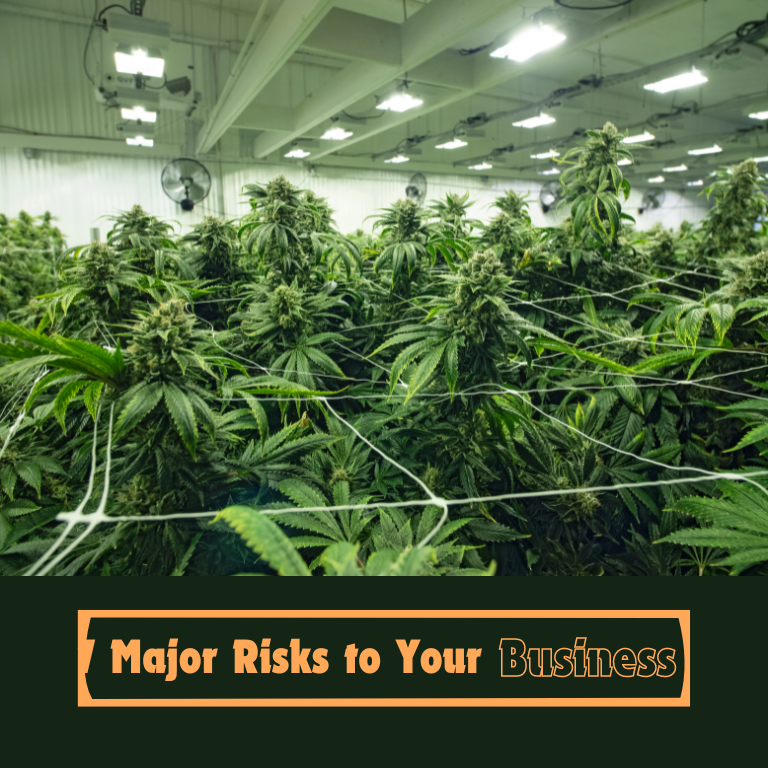Cannabis Cultivation: 7 Major Risks to Your Business

Cannabis cultivation is a booming industry with tremendous potential for profit. However, like any agricultural venture, it comes with its own set of challenges. Understanding and mitigating cannabis cultivation risks is essential for success in this competitive and heavily regulated field. This article will delve into the seven major risks to your cannabis cultivation business and provide strategies to manage them effectively.
The cannabis industry has seen unprecedented growth over the past decade, driven by legalization and increasing public acceptance. However, growing cannabis is not without its risks. From regulatory compliance to environmental challenges, the path to a successful cultivation business is fraught with potential pitfalls. In this article, we will explore the top seven risks associated with cannabis cultivation and offer practical advice on how to navigate these challenges.
Regulatory Compliance
Navigating Complex Regulations: One of the most significant risks in cannabis cultivation is regulatory compliance. The cannabis industry is highly regulated, and rules can vary widely between regions. Failure to comply with local, state, and federal laws can result in severe penalties, including fines, loss of licenses, and even criminal charges. Keeping up with the constantly evolving legal landscape requires diligent research and, often, legal assistance.
Strategies for Compliance
- Stay Informed: Regularly update yourself on changes in cannabis laws and regulations in your area.
- Hire Experts: Employ legal and compliance experts who specialize in the cannabis industry.
- Implement Robust Systems: Develop and maintain comprehensive compliance protocols and documentation.
Environmental Challenges
Climate and Weather: Cannabis plants are sensitive to environmental conditions. Extreme weather events, such as floods, droughts, and storms, can devastate crops. Additionally, climate change poses long-term risks by altering growing conditions unpredictably.
Mitigation Techniques
- Indoor Cultivation: Consider greenhouse or indoor growing facilities to control environmental factors.
- Climate Monitoring: Invest in technology to monitor and manage climate conditions proactively.
- Insurance: Obtain comprehensive crop insurance to protect against environmental damage.
Pest and Disease Management
Threat of Infestation: Pests and diseases are a significant threat to cannabis cultivation. Common pests include spider mites, aphids, and whiteflies, while diseases like powdery mildew and root rot can quickly spread and ruin crops.
Preventive Measures
- Integrated Pest Management (IPM): Implement IPM strategies to reduce reliance on chemical pesticides.
- Regular Inspections: Conduct frequent inspections to detect and address infestations early.
- Biological Controls: Use natural predators and beneficial microorganisms to control pests and diseases.
Financial Risks
High Operational Costs: Cannabis cultivation requires substantial investment in equipment, facilities, and labor. High operational costs, combined with fluctuating market prices, can strain finances and impact profitability.
Financial Management Tips
- Budgeting: Create detailed budgets and financial projections.
- Diversification: Consider diversifying your product offerings to stabilize income.
- Cost Control: Implement cost-saving measures without compromising quality.
Quality Control
Maintaining Product Standards: Quality control is crucial in the cannabis industry, where consumers and regulators demand high standards. Contamination, inconsistent potency, and other quality issues can lead to product recalls, legal problems, and loss of consumer trust.
Ensuring Quality
- Standard Operating Procedures (SOPs): Develop and adhere to SOPs for every aspect of cultivation.
- Testing: Regularly test your products for potency, contaminants, and quality.
- Training: Ensure all staff are well-trained in quality control protocols.
Security Risks
Theft and Vandalism: Cannabis cultivation sites are attractive targets for theft and vandalism due to the high value of the crops. Ensuring the security of your facility is paramount to protecting your investment.
Security Measures
- Physical Security: Install robust fencing, locks, and surveillance cameras.
- Access Control: Restrict access to cultivation areas to authorized personnel only.
- Security Personnel: Employ trained security staff to monitor and protect your site.
Market Competition
Increasing Competition: As the cannabis market grows, so does competition. New entrants and established players alike vie for market share, making it challenging to maintain profitability and growth.
Staying Competitive
- Innovation: Continuously innovate to improve your products and cultivation techniques.
- Branding: Build a strong brand that resonates with consumers.
- Customer Relationships: Focus on building and maintaining strong relationships with your customers.
Cannabis cultivation is a high-reward industry, but it comes with significant risks. From navigating complex regulations to managing environmental challenges and maintaining quality control, cultivators must be proactive and prepared to address these risks. By understanding and mitigating these seven major risks, you can increase your chances of running a successful and sustainable cannabis cultivation business.











